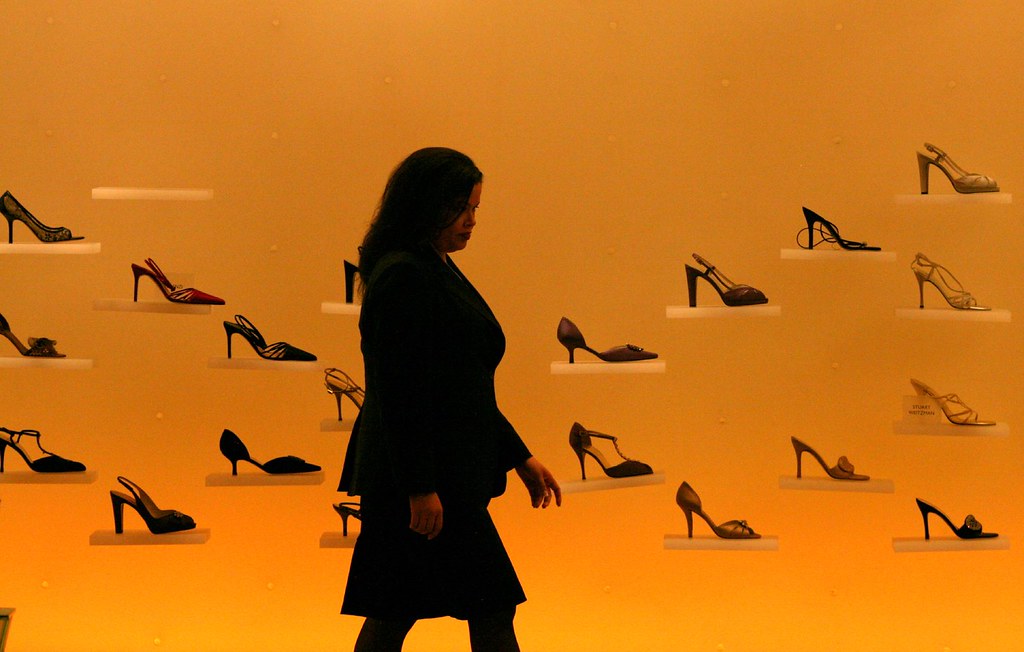 (Image by Thomas Hawk used under CC 2.0 via)
(Image by Thomas Hawk used under CC 2.0 via)
“I like them,” I said, eyeing the smart and slinky black sneakers in my hand, “but my orthotic inserts don’t find inside.”
The saleswoman shook her head sympathetically. “These doctors just don’t understand. They make it so difficult for women looking for shoes.”
Um, I don’t think that’s who’s making it difficult, I said to myself. Because she isn’t the one flooding the market with shoes that discriminate against disabled bodies, it didn’t feel necessary that this one saleswoman be confronted with the issue. But we as a society probably should.
If I don’t wear my orthotics, I burden my achondroplastic back in very unhealthy ways. The same goes if I wear heels regularly, instead of only occasionally, as my orthopedist advises. When I was younger I would often flout the rules, but my tolerance for pain-inducing shoes has lessened since I turned 30 and needed back surgery to avoid paralysis, as one-third of all people with achondroplastic dwarfism do. A friend who has undergone a few operations on her spine absolutely cannot wear heels. Yet wearing orthotics every day is not seen as being healthy and responsible in the same way that, say, running a marathon is.
Will chronic pain management never be seen as bad-ass because it lacks the thrill of breaking records or leaving others in the dust? Or is it because it defies the “no pain, no gain” rule? In which case, foregoing orthotics and swallowing the pain would seem to be the bad-ass choice.
“Oh, I rarely ever wear my orthotics!” two non-disabled women told me years ago.
Eat something sugary or fattening and you can easily attract disapproving looks or even commentary. (“Do you know how many calories/toxins are in that?!”) But risk back pain in a pair of stilettos that make you teeter like a giraffe and you’re suffering for beauty like any self-respecting woman would.
Why? Is it because, as Jessica Valenti wrote last year, too few woman are willing to endure “the social consequences of aesthetic apathy”? Does bodily beauty always require some degree of discomfort? Even the love-your-body yoga crowd pushes the back-to-the-earth barefoot aesthetic, which can be supremely painful for many disabled people.
Fashion is fickle and ever-changing. In a world where humans can find beauty in everything from body-builder biceps to heroin chic, and switch from viewing heels as manly to sexy, it seems possible for us to stop marginalizing and perhaps even some day tout medically responsible choices as fashionable choices. Why haven’t we managed this yet? What will it take to get us there?


Leave a comment